With great power comes great responsibility
There comes a time in every studio’s life, when they reach a whole other ballpark of project, a category that is so monolithic as to require separate teams, multi-year Gantt charts, millions of files, terabytes worth of images, and months upon months of client review meetings to deliver.
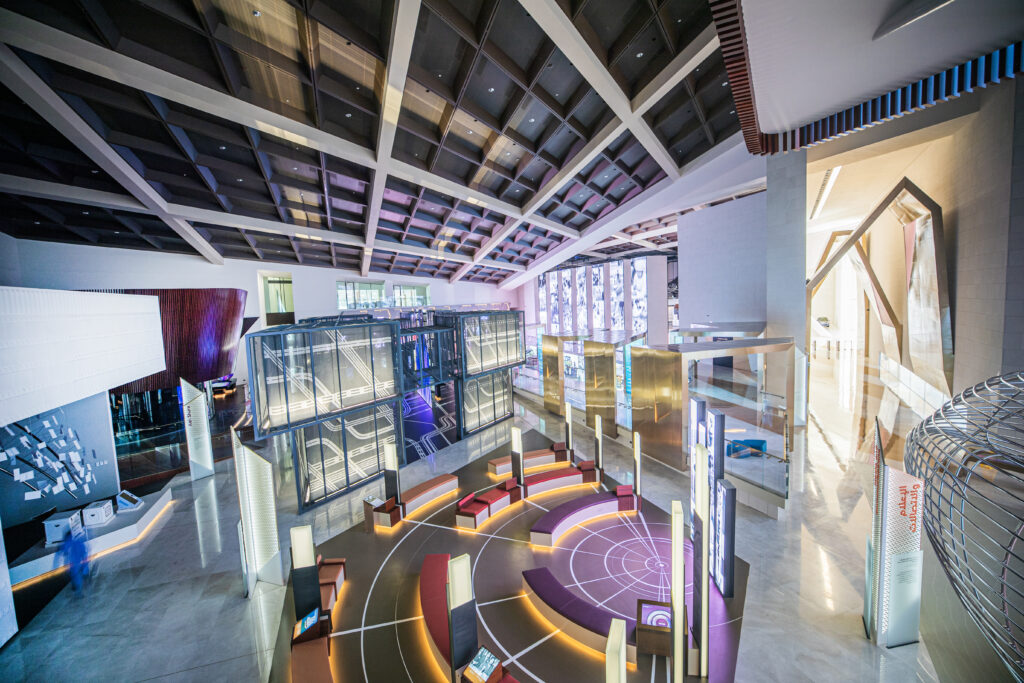
Who dares wins
These projects are high stakes – permanent exhibition spaces in museums often require a decade to plan and execute. They must aim to remain relevant and engaging for at least another 20 years, and expect many millions of visitors over their lifetime. At this scale, there is often an aspect of national identity being conveyed, so the subject matter is sensitive too.
They are also the highwire walk a creative business lives for – expansive, challenging, varied, and tremendously impactful. But they can also be all-consuming and highly stressful, on both the client and agency side. The sheer scale can be overwhelming, and tensions often run high.
One for the Ages
We have just wrapped up our biggest project ever – Oman Across Ages – a project which began in 2018 and opened in March 2023. So, as the dust settles and visitors pour through the doors, we thought it was the right time to jot down some thoughts and lessons learnt—a gentle post-mortem.
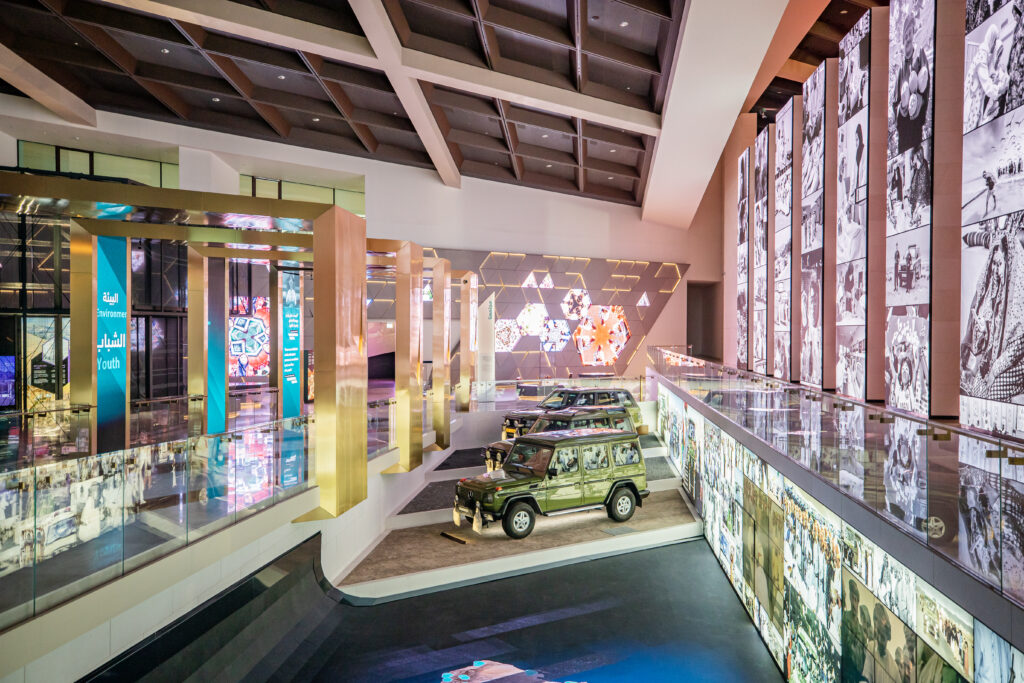
The sizable challenges of large-scale immersive experiences
It’s difficult to convey the sheer size of the building. Entering the permanent exhibition space of over 29,000 square feet, you’re welcomed by a huge 65-foot screen, just one of the 50+ installations we designed for the museum in Manah, Oman.

From the outset, we needed a shared understanding of how the installations would feel within the architecture of the massive exhibition space. Our artists had to grasp the scale of the exhibition to tailor the pace of animations and camera moves and keep the media from being dwarfed by the cavernous galleries.
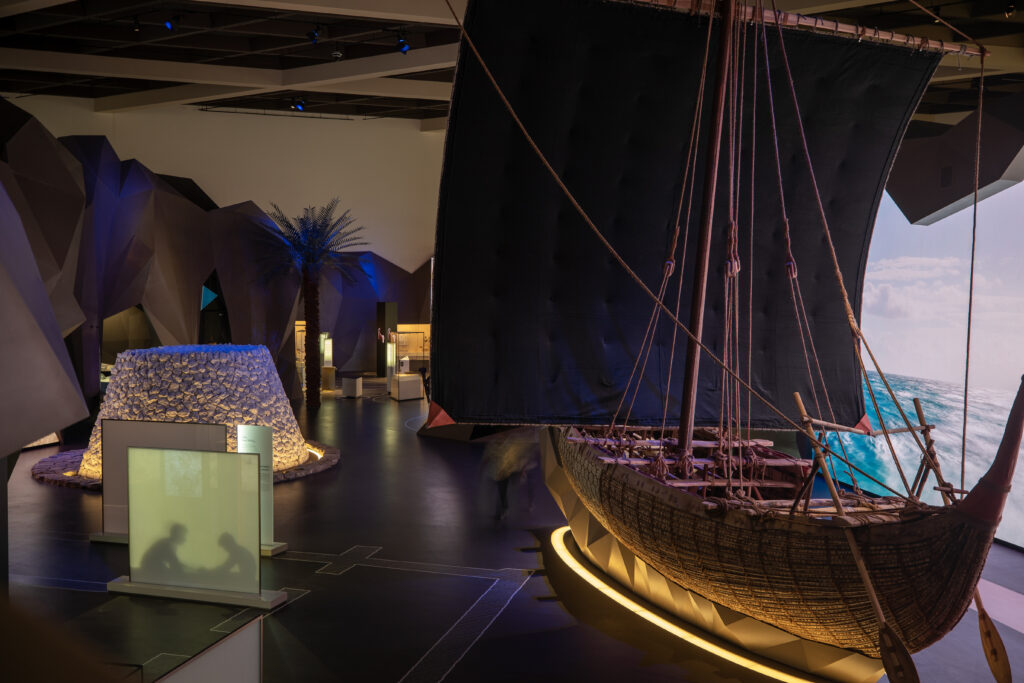
Spatial awareness
We also needed to understand the spatial context of the exhibitions, including how visitors would move through the galleries and experience the pieces from different distances and angles. We had to ensure that media appeared to flow through space from screen to screen — and that visitors’ attention could be guided to the most important design elements without overwhelming them.
Sound and Vision
We considered everything from viewing distance and peripheral vision to screen resolution and audio mapping. Small issues like the wrong lighting cue or an unbalanced audio track could easily interrupt the viewer’s suspension of disbelief and ruin the immersive effect.
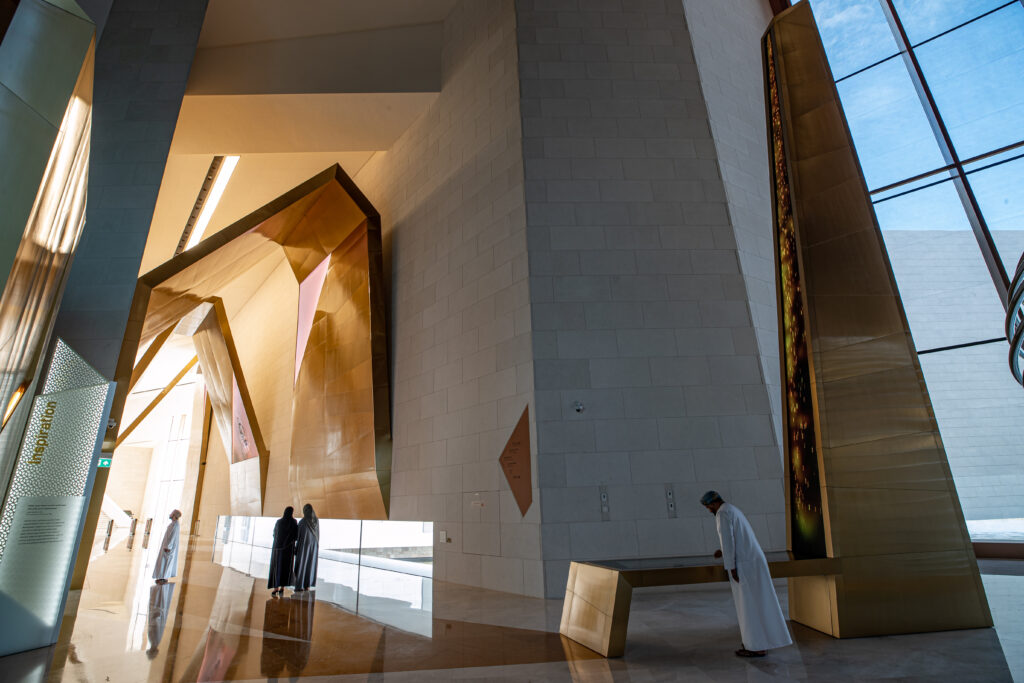
How to cut shapes
We faced technical challenges in the shape and size of our LED screens; design teams are very familiar with creating media for a 16:9 ratio, but making media for large spaces meant working with different aspect ratios and unusual shapes. Beyond that, we had to ensure that our large-scale visuals looked good up close as well as at a distance, which required higher resolutions and huge file sizes.
Squint’s big digital doctrine
Many of our technical challenges were solved by Virtual Twins, which helped us align our teams and de-risk the decision-making process. These virtual twins use spatially accurate digital replicas of exhibition space to facilitate the design process, simulate the visitor’s perspective, and preview the visual impact of media.

In Oman Across Ages, we used several digital twins in a multi-step process. First, 3D Previz gave us a simple CAD model that lets us preview our media in the context of the museum space. Next, we put that model in a VR environment so we could review the pace and flow of the animation at a human scale. Then, when we arrived on site, LiDAR scans allowed us to relay progress updates and detailed measurements to the design team.
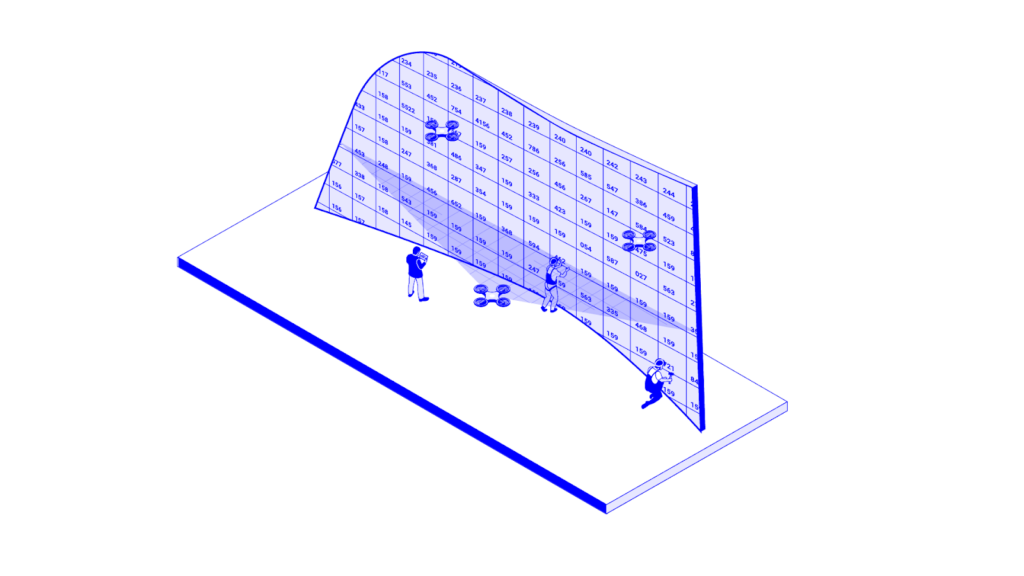
Twin powers, activate!
Virtual Twins allow our design teams to pursue increasingly ambitious projects. Ultimately, we also needed to develop test media, which we trialled on hardware in an off-site hangar before the museum building was ready. This process allowed us to better inform our design development and prepared us for the time-consuming onsite tests that we would conduct on the final museum hardware.
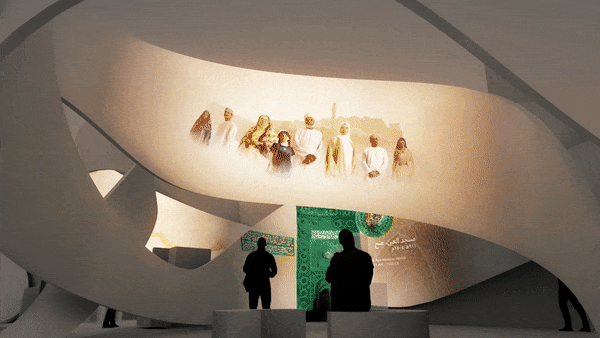
Time machine tech
We also relied on AI tools — tools that did not even exist when the project first started — to upscale content in real-time to 8K resolution. The impact of these tools can be seen on the main screen as visitors enter. Assets that wouldn’t have filled the enormous 11m screen are artificially extended; scenes from natural vistas that were initially out of shot are imagined by AI and blended into the original image.
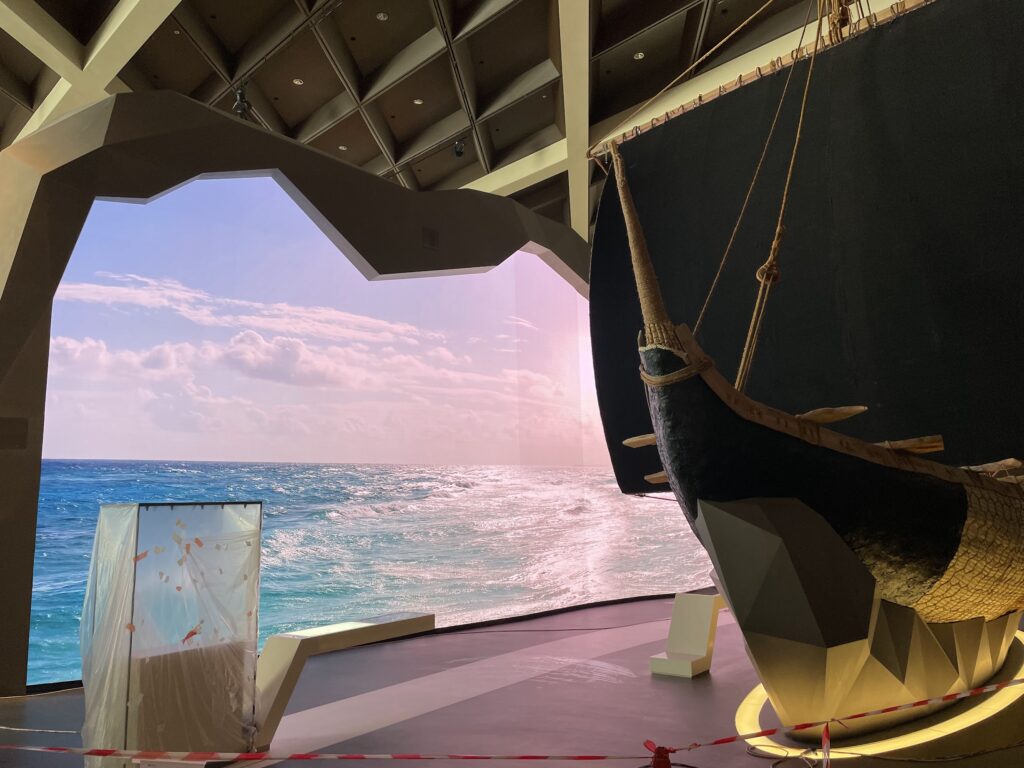
Navigating stormy screens
Additionally, we used mapping templates, which have become a standard in our process. These mapping templates allow us to transfer a small file of a still image as a test pattern. The still images can be sent back and forth easily, even on a messenger like WhatsApp, and are used to warp and align media until it fits a given screen. Once we’ve got the right fit, we can prepare our much larger media files, which take significantly longer to render and send, to fit their onsite screens exactly.
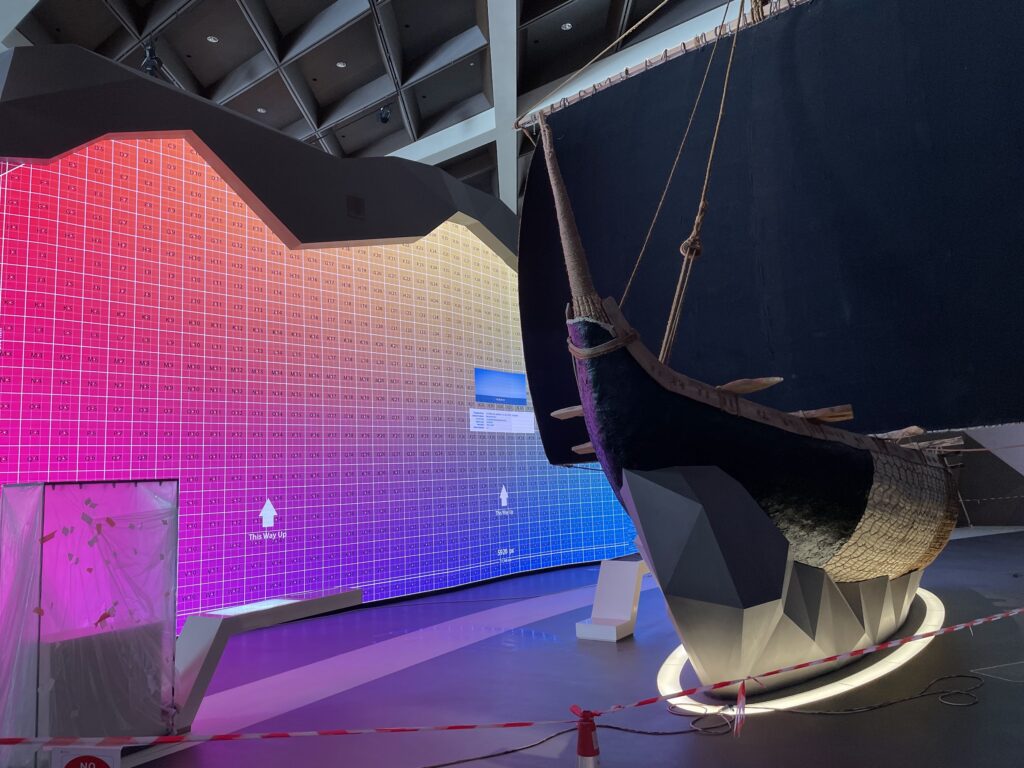
This mitigates the costs of transferring large files and solves a key technical challenge in creating media for massive, oddly shaped screens.
The ultimate success of Oman Across Ages came down to not just a single piece of technology but rather a carefully curated combination of many different technologies and approaches.
- To film footage of nearly inaccessible cave systems, we created LiDAR scans to pre-visualize drone flight paths and worked with local drone operators to get the exact shots we needed.
- To tell the unique story of Oman’s identity, we embarked on a five-year journey of cultural immersion with Omani artists, tour guides, teachers, and scholars. The end result is a space that illustrates a nation’s multifaceted heritage like never before.
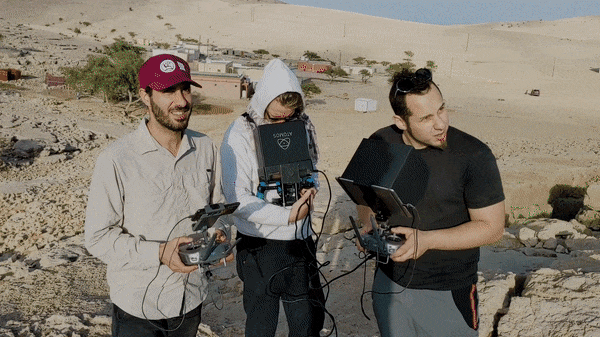
Large-scale exhibitions: Why now?
Lately, we’ve seen a major shift toward the kind of installations we created for Oman Across Ages. Technological advancements have made immersive content more cost-effective at scale (think cheaper LED screens and AI tools), and audiences now expect truly unique experiences that fully engage all their senses. It’s a competitive space, and there aren’t many companies that can execute this kind of experience well.
Having pioneered the use of immersive digital media in museums, Squint was able to scale that experience for Oman Across Ages — one that encourages visitors to leave reality behind and enter a new world.
But that’s far from the only project where we’ve crafted a successful large-scale experience.
Constructing the world’s most famous building
At the Empire State Building, for instance, we surrounded visitors on all four walls with enormous installations like the one in the Construction Gallery, which features historically accurate life-size visuals of the iconic building during construction.

Peak Performace
For Hong Kong’s iconic Peak Tram, the oldest mountainside railway in Asia, we similarly created a full-immersion wraparound video experience, Go Wild at the Peak. Our expansive LED screens augment the visitor experience with hyper-realistic panoramic visuals of Victoria Peak, including its woodland flora and fauna, at breathtaking moments from dawn to dusk.

Flying Pigs
Meanwhile, for the Lift 109 Experience at Battersea Power Station, Squint created digital content with animated text and soundscapes that flow across massive LED screens to fill the immense Turbine Hall A.

Big Investment, big return
Despite the challenges of working at this scale — including long development cycles and high initial investments — these massive installations make both creative and financial sense. Large-scale, immersive media is a strategic investment for museums, offering an unparalleled gallery experience and enhanced visitor engagement.
Let’s make things personal
Media installations also offer interchangeability: You can change the content without ripping out the hardware or renovating the gallery. Once in place, this technology isn’t a single-use asset, and organisations can tell new and evolving stories without starting from scratch. They can even use it to monetise their space by hosting events and facilitating brand installations, like the Lightroom at King’s Cross does.
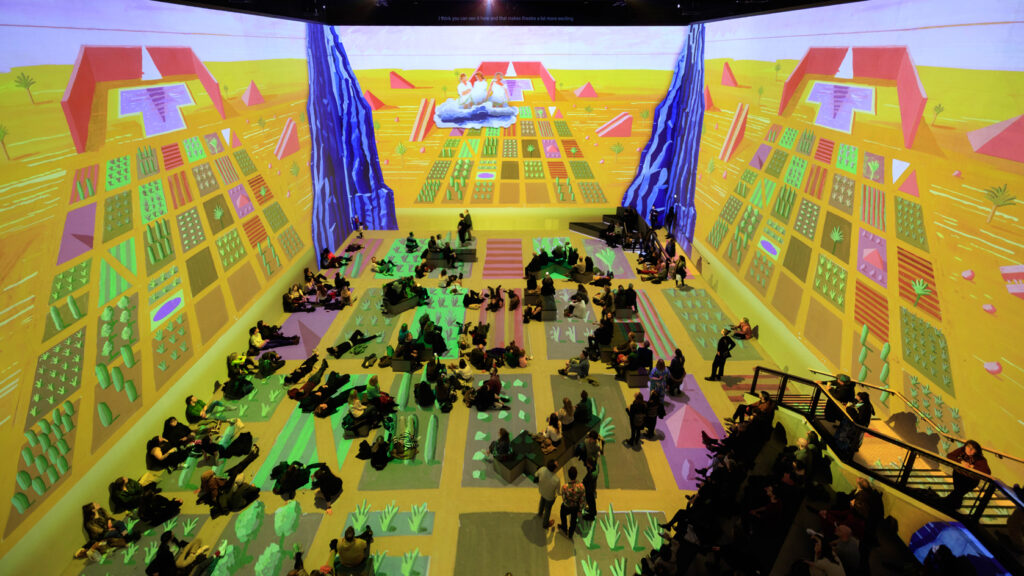
Tickets, please!
Beyond that, immersive media brings increased revenue. The price that visitors will pay for tickets to large immersive exhibitions is materially greater than the price they’ll pay for more traditional experiences. The surging popularity of experiential art and virtual reality means that price points can be adjusted upwards to match the high demand.
Museums may ask, “Can we afford to do it?” We believe you can’t afford not to do it. Investing in large-scale media installations is a smart bet in an age of competitive visitor attendance. Immersive experiences allow museums to celebrate their history and engage their audience with new types of storytelling. And best of all, they offer artists, institutions, and entire nations the opportunity to open a new door to the future.
